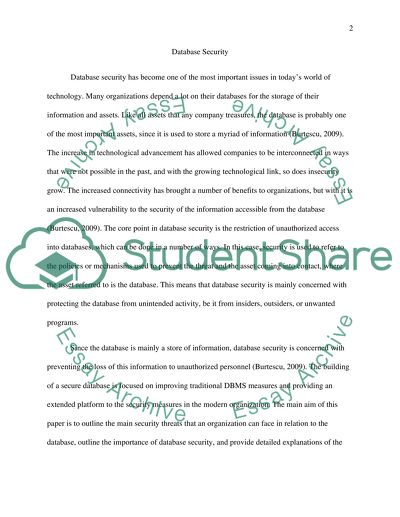Cite this document
(“Methods for Database Security Essay Example | Topics and Well Written Essays - 2500 words”, n.d.)
Retrieved from https://studentshare.org/information-technology/1393023-methods-for-database-security
Retrieved from https://studentshare.org/information-technology/1393023-methods-for-database-security
(Methods for Database Security Essay Example | Topics and Well Written Essays - 2500 Words)
https://studentshare.org/information-technology/1393023-methods-for-database-security.
https://studentshare.org/information-technology/1393023-methods-for-database-security.
“Methods for Database Security Essay Example | Topics and Well Written Essays - 2500 Words”, n.d. https://studentshare.org/information-technology/1393023-methods-for-database-security.


